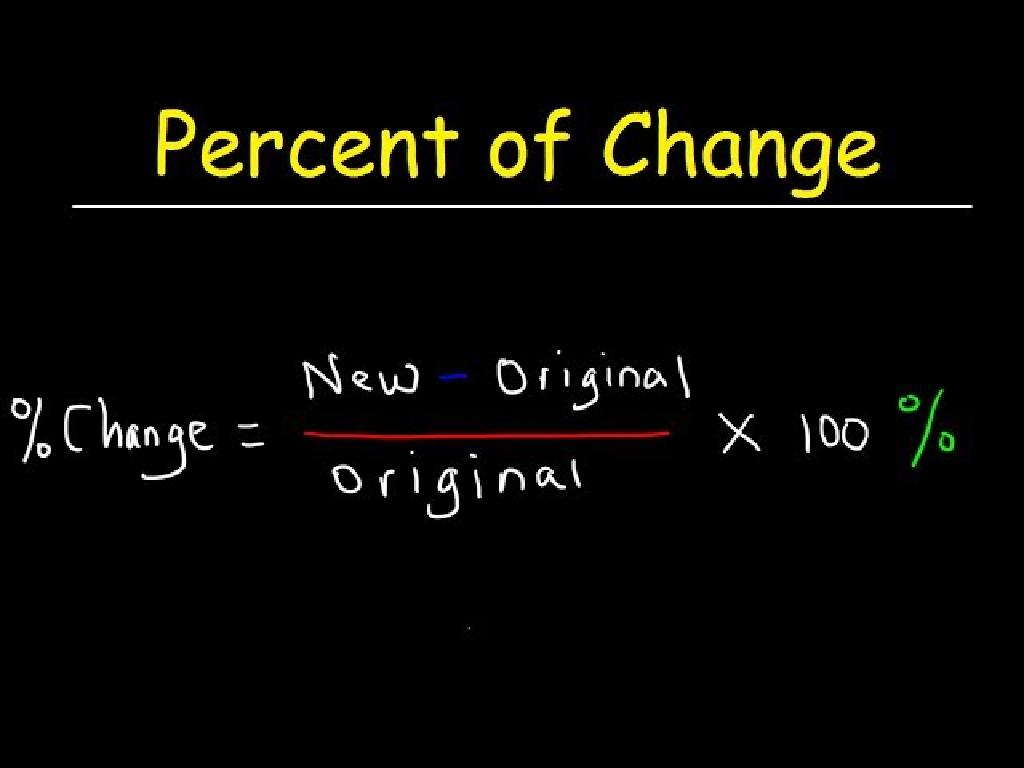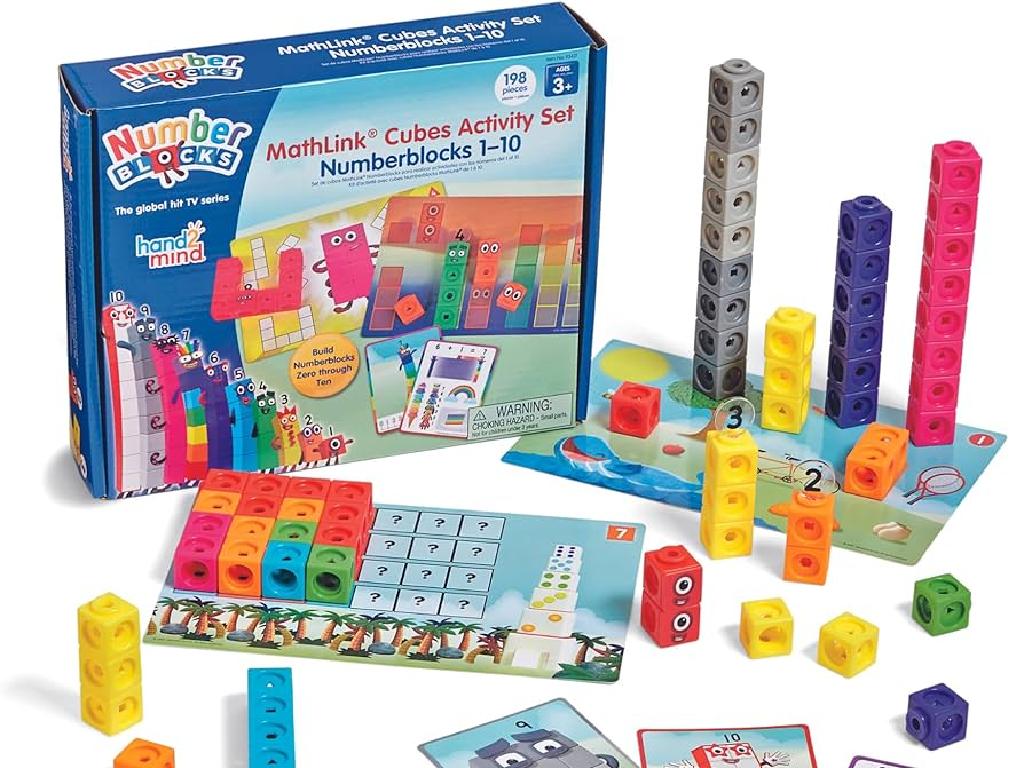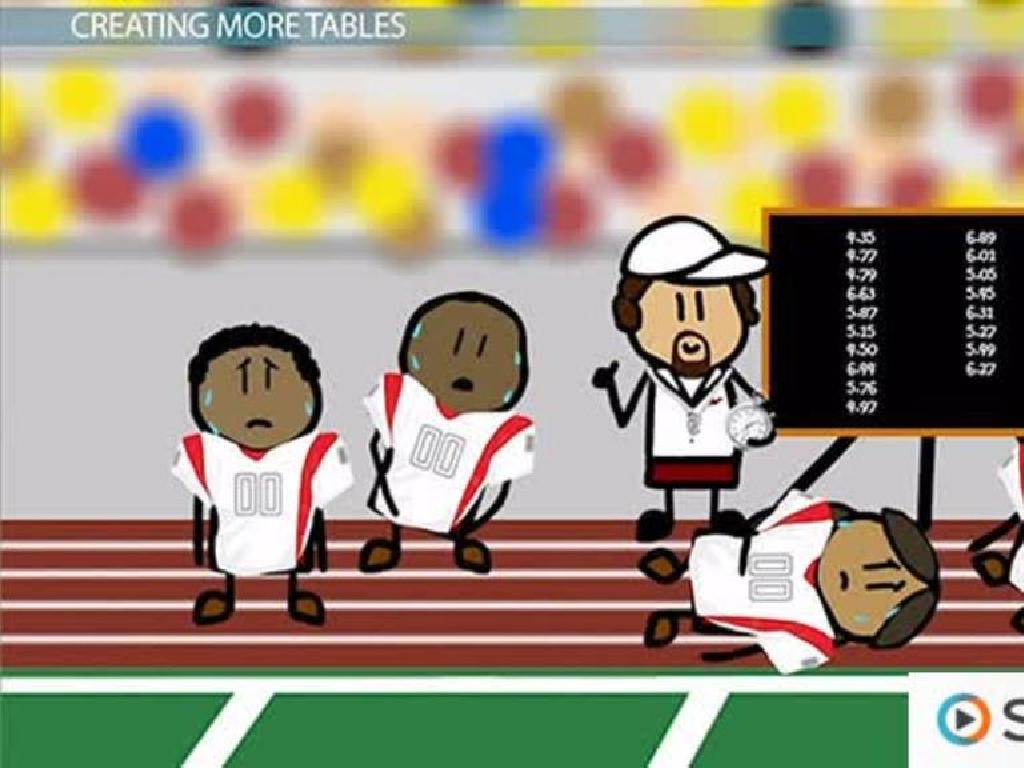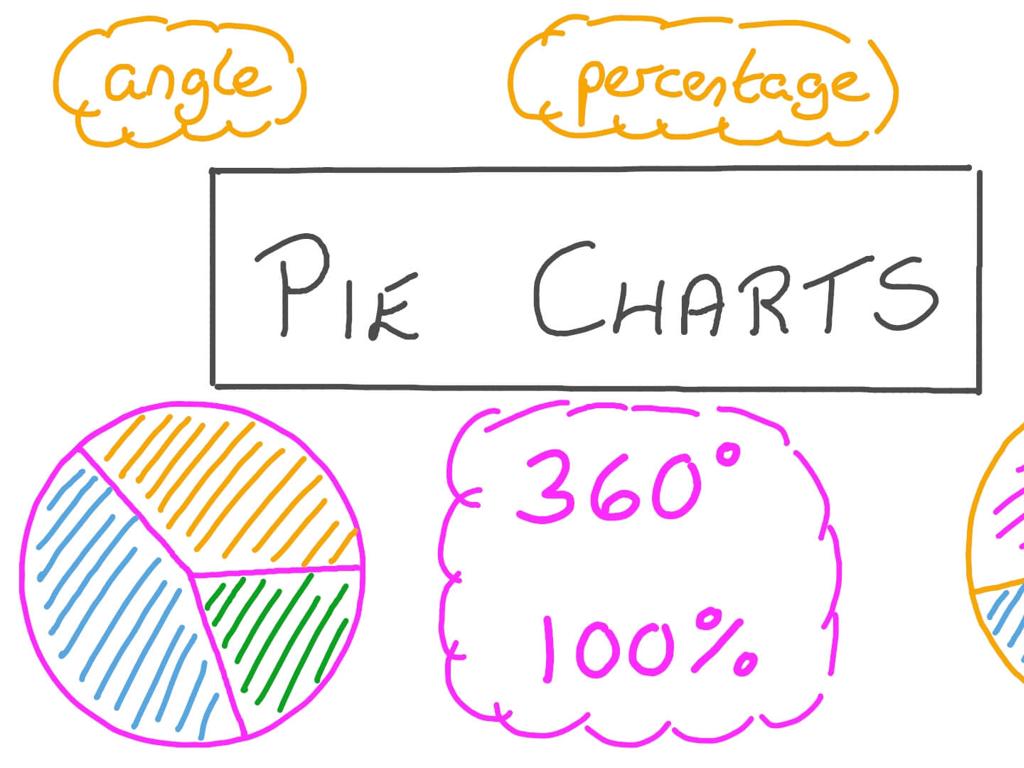Identify Roles In Food Chains
Subject: Science
Grade: Fifth grade
Topic: Ecosystems
Please LOG IN to download the presentation. Access is available to registered users only.
View More Content
Welcome to Ecosystems: Food Chains
– Explore our environment
– Define an ecosystem
– A community of living things interacting with their surroundings.
– Discover food chain roles
– Producers, consumers, and decomposers in nature.
– Preview: Journey through food chains
|
This slide introduces the concept of ecosystems and their importance to fifth graders. Begin by discussing the environment and the various ecosystems within it. Define an ecosystem as a community of living organisms in conjunction with the nonliving components of their environment, interacting as a system. Highlight the roles within a food chain: producers (like plants), consumers (animals that eat other organisms), and decomposers (organisms that break down dead material). Use this slide to set the stage for a deeper dive into the specifics of food chains, which will be covered in today’s lesson. Encourage students to think about local examples of ecosystems and the roles different organisms play within them.
Exploring Food Chains in Ecosystems
– What is a Food Chain?
– A sequence showing who eats whom in the wild
– Energy’s journey through a chain
– Energy flows from plants to predators
– Food chain examples
– Grassland: grass rabbit fox. Ocean: algae fish seal
– Roles within various ecosystems
– Producers to consumers to decomposers
|
Begin with a simple definition of a food chain, ensuring students understand it as a sequence that displays feeding relationships. Explain how energy is transferred from one organism to another, starting with producers (like plants) and moving up to various levels of consumers (herbivores, then carnivores). Provide concrete examples from different ecosystems, such as a grassland or oceanic food chain, to illustrate the concept. Discuss the roles organisms play at each level, emphasizing the importance of each role in maintaining the balance of the ecosystem. Encourage students to think of food chains they might observe in their local environment.
Producers: The Energy Starters in Ecosystems
– What are Producers?
– Organisms that make their own food, like plants and algae.
– Photosynthesis: Plant Food Making
– Plants use sunlight to turn water and CO2 into glucose and oxygen.
– Examples of Ecosystem Producers
– Grass in a savanna, algae in the ocean, trees in a forest.
|
This slide introduces the concept of producers in food chains, which are essential for the survival of ecosystems. Producers, such as plants and algae, are organisms that can make their own food through the process of photosynthesis. They use energy from sunlight to convert carbon dioxide and water into glucose, a sugar that provides energy, and oxygen. Examples of producers include grass in savannas, algae in oceans, and trees in forests. These producers form the base of the food chain, supporting all other life forms. Encourage students to think of producers as the ‘energy starters’ of the ecosystem, and discuss the importance of sunlight in this process. Ask students to identify producers in different ecosystems and consider how they support the food chain.
Consumers: The Energy Users in Food Chains
– Types of consumers: Herbivores, Carnivores, Omnivores
– Herbivores eat plants, carnivores eat meat, omnivores eat both.
– Consumers’ reliance on producers
– Producers like plants are the source of energy for consumers.
– Role of consumers in food chains
– Consumers are organisms that eat other organisms in the food chain.
– Examples of consumers
– A rabbit (herbivore), a lion (carnivore), and a bear (omnivore).
|
This slide introduces students to the concept of consumers within food chains, focusing on the different types and their roles. Consumers are classified based on their diet: herbivores eat only plants, carnivores eat only other animals, and omnivores can eat both. It’s crucial for students to understand that consumers depend on producers, such as plants, for their energy. Producers make their own food through photosynthesis, which consumers then eat to obtain energy. Examples help illustrate these concepts, making them more tangible for fifth graders. Discuss how a rabbit gets energy from eating plants, a lion from eating other animals, and a bear from eating a varied diet. Encourage students to think of other examples and how each consumer fits into a food chain.
Decomposers: The Recyclers of Ecosystems
– Who are decomposers?
– Organisms that break down dead material
– Decomposers’ role in food chains
– They recycle nutrients back into the soil
– How decomposers break down matter
– They turn waste into soil-enriching material
– Importance of decomposers in nature
|
Decomposers are nature’s recyclers, playing a crucial role in the food chain by breaking down dead plants and animals into simpler substances. They include organisms like bacteria, fungi, and worms. By decomposing organic matter, they release nutrients back into the ecosystem, making them available for plants and other organisms. This slide will help students understand the importance of decomposers and their function in maintaining the balance of ecosystems. Encourage students to think of examples of decomposers they might find in their local environment and how these organisms contribute to the health of the ecosystem.
Interconnected Roles in Ecosystems
– Food chains form food webs
– A food web is a network of interconnected food chains.
– Balance within ecosystems
– Every organism plays a role in maintaining the ecosystem’s balance.
– Effects of disrupting a food chain
– Removing one species can affect the entire food web.
– Maintaining ecosystem health
|
This slide aims to teach students about the complex interconnections within ecosystems, specifically through food chains and webs. A food web shows how different food chains are linked and how energy flows from one organism to another. It’s crucial for students to understand that ecosystems are balanced systems where each organism depends on others for survival. Disruptions in a food chain, such as the removal of a key species, can lead to significant changes in the ecosystem. Discuss examples like the removal of a predator leading to overpopulation of prey. Emphasize the importance of every species and how even small changes can have large impacts. Encourage students to think of ways humans can impact these delicate systems and the importance of conservation efforts.
Class Activity: Create Your Food Chain
– Build your own food chain
– Select an ecosystem to explore
– Choose from forest, ocean, desert, etc.
– Find producers, consumers, decomposers
– Producers make food, consumers eat it, decomposers break down dead matter
– Illustrate the food chain
– Draw or use pictures to show the relationships
|
This activity is designed to help students understand the concept of food chains within an ecosystem. Students will choose an ecosystem, such as a forest, ocean, or desert, and identify the roles of producers (like plants), consumers (animals that eat plants or other animals), and decomposers (organisms that break down dead matter). They will then create a visual representation of the food chain they have constructed. For the teacher: Prepare examples of each role for various ecosystems to assist students if they get stuck. Have materials ready for drawing or provide images for students to use. Possible variations of the activity could include creating a food web instead of a chain, focusing on endangered species within an ecosystem, or comparing food chains from different ecosystems to understand biodiversity.
Food Chain Roles and Ecosystem Balance
– Recap of food chain roles
– Producers, consumers, decomposers
– Open floor for questions
– Discuss ecosystem role importance
– Each role contributes to ecosystem health
– Understanding ecosystem balance
– Balance ensures survival of species
|
Begin the slide by reviewing the roles within a food chain: producers (like plants), consumers (animals that eat plants or other animals), and decomposers (organisms that break down dead material). Allow time for students to ask any questions they have about food chains. Move on to a discussion about the importance of each role in maintaining a healthy ecosystem. Emphasize that every part of the food chain is crucial because it ensures the flow of energy and the cycling of nutrients. Without one, the balance of the ecosystem could be disrupted, leading to problems for all living things within it. Encourage students to think of examples where the removal of one role has led to issues within an ecosystem.
Wrapping Up: Food Chains
– Recap of food chain roles
– Homework: Create a food chain
– Draw a simple food chain from any ecosystem
– Describe each organism’s role
– Explain how each part of the chain depends on the others
– Next class: Ecosystem interactions
|
As we conclude today’s lesson, remind the students of the key roles in a food chain: producers, consumers, and decomposers. For homework, they should draw a food chain and label each organism’s role within it. This will help reinforce their understanding of how energy flows in an ecosystem. Encourage creativity and research into different ecosystems for their food chain examples. In the next class, we’ll build on this foundation by exploring how different food chains interact within an ecosystem, introducing the concept of food webs and the importance of biodiversity.





